Water Authorities’ Pricing Strategies to Recover Supply Costs in the Absence of Water Metering for Irrigated Agriculture
Abstract
:1. Introduction
2. Materials and Methods
2.1. Background Literature
2.2. Model Setting and Flat Rate Pricing Schemes
2.3. The Incentive Pricing Scenario
2.4. Incentive Pricing with Full Compliance and Perfect Detection
2.5. Incentive Pricing with Effective Detection
2.6. Evaluating Strategies under the Two Pricing Schemes
3. Empirical Example
3.1. Case Study and Model Parameterisation
3.2. Results
4. Discussion and Conclusions
Acknowledgments
Author Contributions
Conflicts of Interest
Appendix A
References
- Bar-Shira, Z.; Finkelshtain, I.; Simhon, A. Block-rate versus uniform water pricing in agriculture: An empirical analysis. Am. J. Agric. Econ. 2006, 88, 986–999. [Google Scholar] [CrossRef]
- Frija, A.; Wossink, A.; Buysse, J.; Speelman, S.; Huylenbroeck, G. Irrigation pricing policies and its impact on agricultural inputs demand in Tunisia: A DEA-based methodology. J. Environ. Manag. 2011, 92, 2019–2118. [Google Scholar] [CrossRef] [PubMed]
- Zhou, Q.; Wu, F.; Zhang, Q. Is irrigation water price an effective leverage for water management? An empirical study in the middle reaches of the Heihe River basin. Phys. Chem. Earth Parts A/B/C 2015, 89, 25–32. [Google Scholar] [CrossRef]
- European Commission. Report on the Progress in Implementation of the Water Framework Directive—Programmes of Measures; European Commission: Brussels, Belgium, 2015. [Google Scholar]
- Ohab-Yazdi, S.; Ahmadi, A. Design and evaluation of irrigation water pricing policies for enhanced water use efficiency. J. Water Resour. Plan. Manag. 2015, 142, 5001–5011. [Google Scholar] [CrossRef]
- Molle, F. Water scarcity, prices and quotas: A review of evidences on irrigation volumetric pricing. Irrig. Drain. Syst. 2009, 23, 43–58. [Google Scholar] [CrossRef]
- Speelman, S.; Buysse, J.; Farolfi, S.; Frija, A.; D’Haesa, M.; D’Haesa, L. Estimating the impacts of water pricing on smallholder irrigators in North West Province, South Africa. Agric. Water Manag. 2009, 96, 1560–1566. [Google Scholar] [CrossRef]
- Giannoccaro, G.; Prosperi, M.; Zanni, G. Assessing the impact of alternative water pricing schemes on income distribution. J. Agric. Econ. 2010, 61, 527–544. [Google Scholar] [CrossRef]
- ARCADIS. The Role of Water Pricing and Water Allocation in Agriculture in Delivering Sustainable Water Use in Europe—Final Report; Arcadis: Brussels, Belgium, 2012. [Google Scholar]
- Viaggi, D.; Raggi, M.; Bartolini, F.; Gallerani, V. Are simple pricing mechanisms enough? Designing contracts for irrigation water under asymmetric information in an area of Northern Italy. Agric. Water Manag. 2010, 97, 1326–1332. [Google Scholar] [CrossRef]
- Johansson, R.C.; Tsur, Y.; Roe, L.T.; Doukkali, R.; Dinar, A. Pricing irrigation water: A review of theory and practice. Water Policy 2002, 4, 173–199. [Google Scholar] [CrossRef]
- Smith, R.B.W.; Tsur, Y. Asymmetric information and pricing natural resource: Understanding the case of unmetered water. Land Econ. 1997, 97, 1326–1332. [Google Scholar] [CrossRef]
- Galioto, F.; Raggi, M.; Viaggi, D. Pricing policies in managing water resources in agriculture: An application of contract theory to unmetered water. Water 2013, 5, 1502–1516. [Google Scholar] [CrossRef]
- Lika, A.; Galioto, F.; Scardigno, A.; Zdruli, P.; Viaggi, D. Pricing unmetered irrigation water under asymmetric information and full cost recovery. Water 2016, 8, 596. [Google Scholar] [CrossRef]
- Tsur, Y.; Dinar, A. The relative efficiency of alternative methods for pricing irrigation water and their implementation. World Bank Econ. Rev. 1997, 11, 243–262. [Google Scholar] [CrossRef]
- Fragoso, M.S. R.; Marques, A.F.C. Alternative irrigation water pricing policies: An econometric mathematical programming model. New Medit Mediterr. J. Econ. Agric. Environ. 2015, 14, 42–49. [Google Scholar]
- Ester, K.W.; Liu, Y. Cost Recovery and Water Pricing for Irrigation and Drainage Projects; World Bank, Agriculture and Rural Development: Washington, DC, USA, 2005. [Google Scholar]
- European Commission. Communication from the Commission (COM(2012)673): A Blueprint to Safeguard Europe’s Water Resources; European Commission: Brussels, Belgium, 2016. [Google Scholar]
- European Commission. Report from the commission to the council and the European parliament. In Second Follow-Up Report to the Communication on Water Scarcity and Droughts in the European Union COM (2007) Final; European Commission: Brussels, Belgium, 2012. [Google Scholar]
- Bos, M.G.; Walters, W. Water charges and irrigation efficiencies. Irrig. Drain. Syst. 1990, 4, 267–278. [Google Scholar] [CrossRef]
- Molle, F.; Berkoff, J. Water pricing in irrigation: Mapping the debate in the light of experience. In Irrigation Water Pricing. The Gap between Theory and Practice; Molle, F., Berkoff, J., Eds.; Biddles Books Ltd.: King’s Lynn, UK, 2007; pp. 21–93. [Google Scholar]
- Esteban, E.; Albiac, J. Water Nonpoint Pollution Problems in Europe; GWF Discussion Paper 1224; Global Water Forum: Canberra, Australia, 2012. [Google Scholar]
- Moxey, A.; White, B.; Ozanne, A. Efficient contract design for agri-environmental policy. J. Agric. Econ. 1999, 49, 187–202. [Google Scholar]
- White, B. Designing voluntary agri-environmental policy with hidden information and hidden action. J. Agric. Econ. 2002, 53, 353–360. [Google Scholar]
- White, B.; Hankey, N. Should we pay for ecosystem service outputs, inputs or both? Environ. Resour. Econ. 2016, 63, 765–787. [Google Scholar] [CrossRef]
- Galioto, F.; Raggi, M.; Viaggi, D. Incentive pricing for irrigation water with asymmetric information. In Economics of Water Management in Agriculture; Bournaris, T., Berbel, J., Manos, B., Viaggi, D., Eds.; CRS Press: Boca Ratorn, FL, USA, 2015; pp. 168–188. [Google Scholar]
- Hart, R.; Latacz-Lohmann, L. Combating moral hazard in agri-environmental schemes: A multiple-agent approach. Eur. Rev. Agric. Econ. 2005, 32, 75–91. [Google Scholar] [CrossRef]
- Choe, C.; Fraser, I. A note on imperfect monitoring of agri-environmental policy. J. Agric. Econ. 1988, 49, 250–258. [Google Scholar] [CrossRef]
- Ozanne, A.; Hogan, T.; Colman, D. Moral hazard, risk aversion and compliance monitoring in agri-environmental policy. Eur. Rev. Agric. Econ. 2001, 28, 329–347. [Google Scholar] [CrossRef]
- Millock, K.; Xabadia, A.; Zilberman, D. Policy for the adoption of new environmental monitoring technologies to manage stock externalities. J. Environ. Econ. Manag. 2012, 64, 102–116. [Google Scholar] [CrossRef]
- Fraser, R. Moral hazard and risk management in agri-environmental policy. J. Agric. Econ. 2002, 53, 475–487. [Google Scholar] [CrossRef]
- Fraser, R. Presidential address to cheat or not to cheat: Moral hazard and agri-environmental policy. J. Agric. Econ. 2013, 64, 527–536. [Google Scholar] [CrossRef]
- Zilberman, D. Incentives and economics in water resource management. In Proceedings of the Second Toulouse Conference on Environment and Resource Economics, Toulouse, France, 14–16 May 1997. [Google Scholar]
- Rothkopf, A.; Pibernik, R. Maverick buying: Eliminate, participate, leverage? Int. J. Prod. Econ. 2016, 179, 77–89. [Google Scholar] [CrossRef]
- Bolton, P.; Dewatripont, M. Contract Theory; The MIT Press: Cambridge, MA, USA; London, UK, 2005; pp. 12–169. ISBN 0-262-02576-0. [Google Scholar]
- Laffont, J.J.; Martimort, D. The Theory of Incentives. The Principal-Agent Model; Princeton University Press: Princeton, NJ, USA, 2002; pp. 145–185. ISBN 0-691-09183-8. [Google Scholar]
- Giannakis, E.; Bruggenan, A.; Djuma, H.; Kozyra, J.; Hammer, H. Water pricing and irrigation across Europe: Opportunities and constraints for adopting irrigation scheduling decision supply systems. Water Sci. Technol. Water Supply 2016, 16, 245–252. [Google Scholar] [CrossRef]
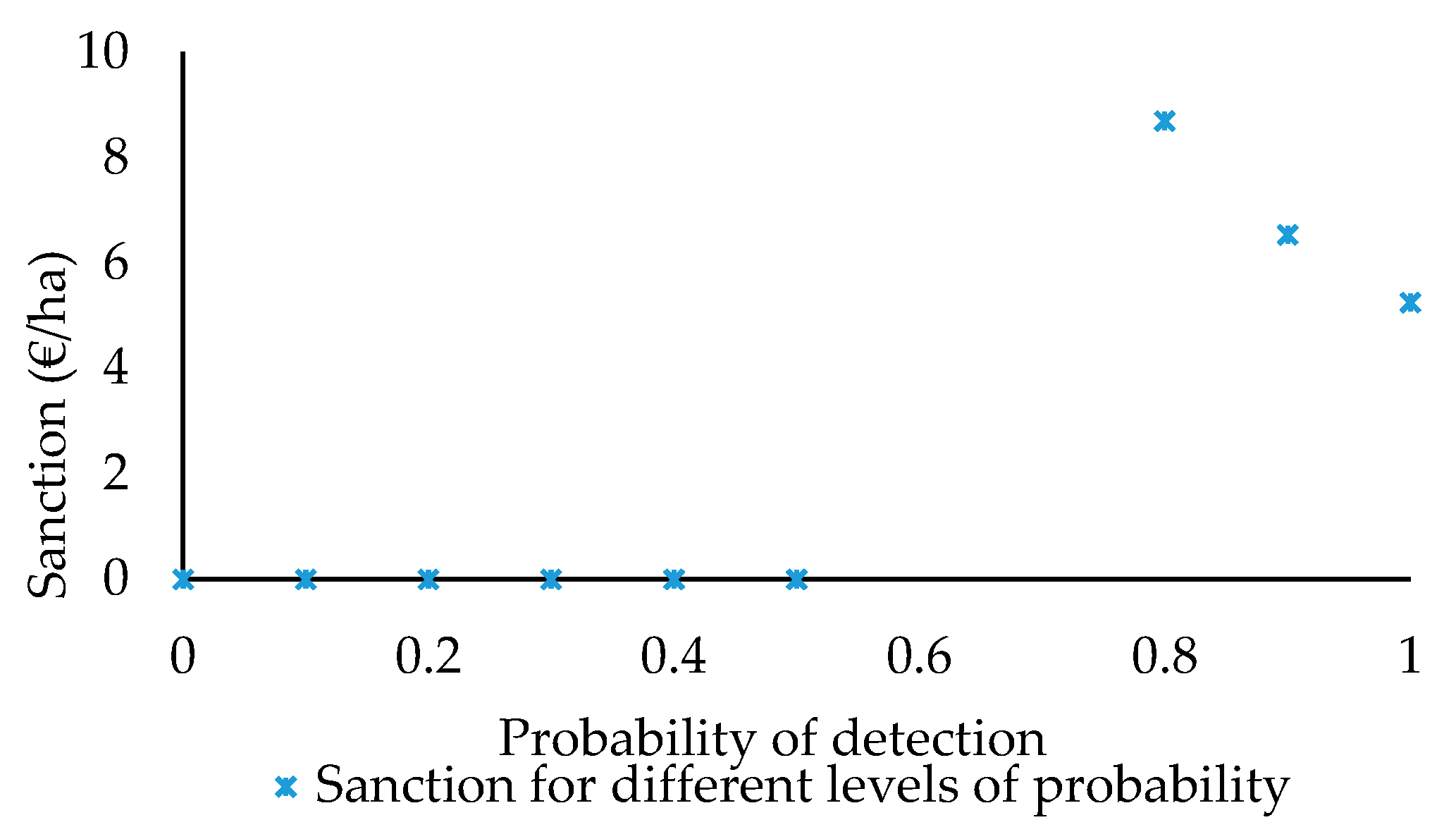

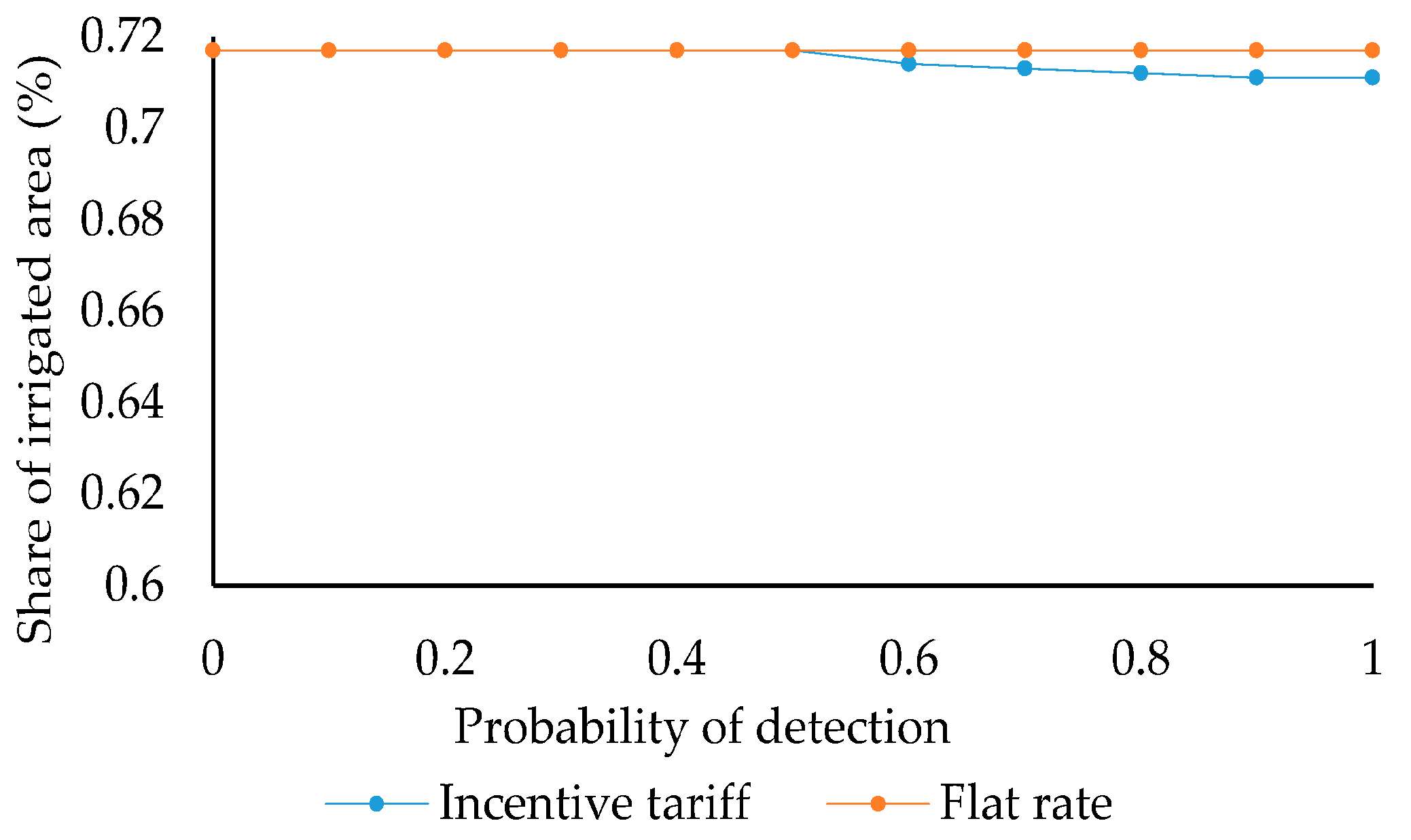
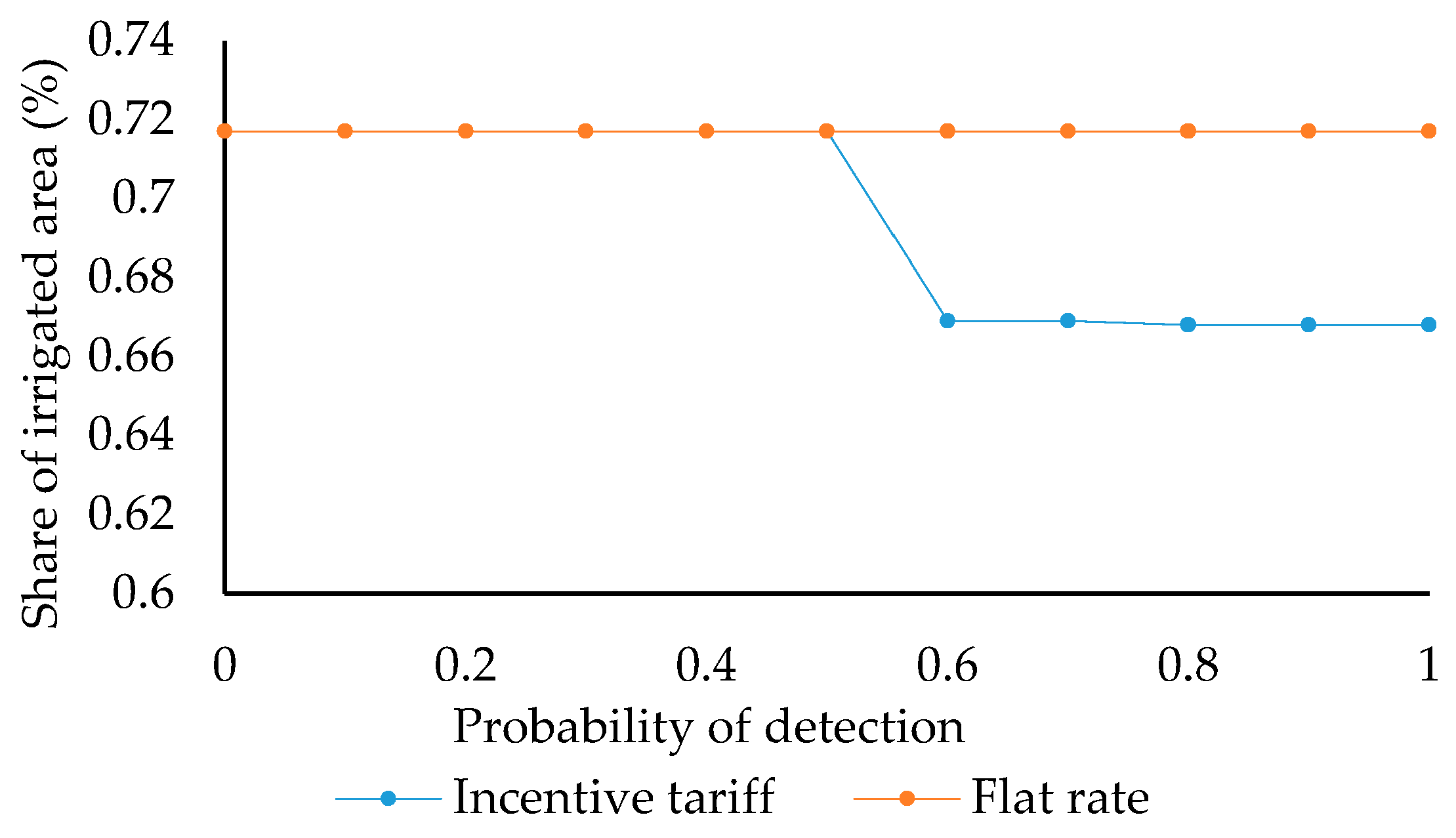
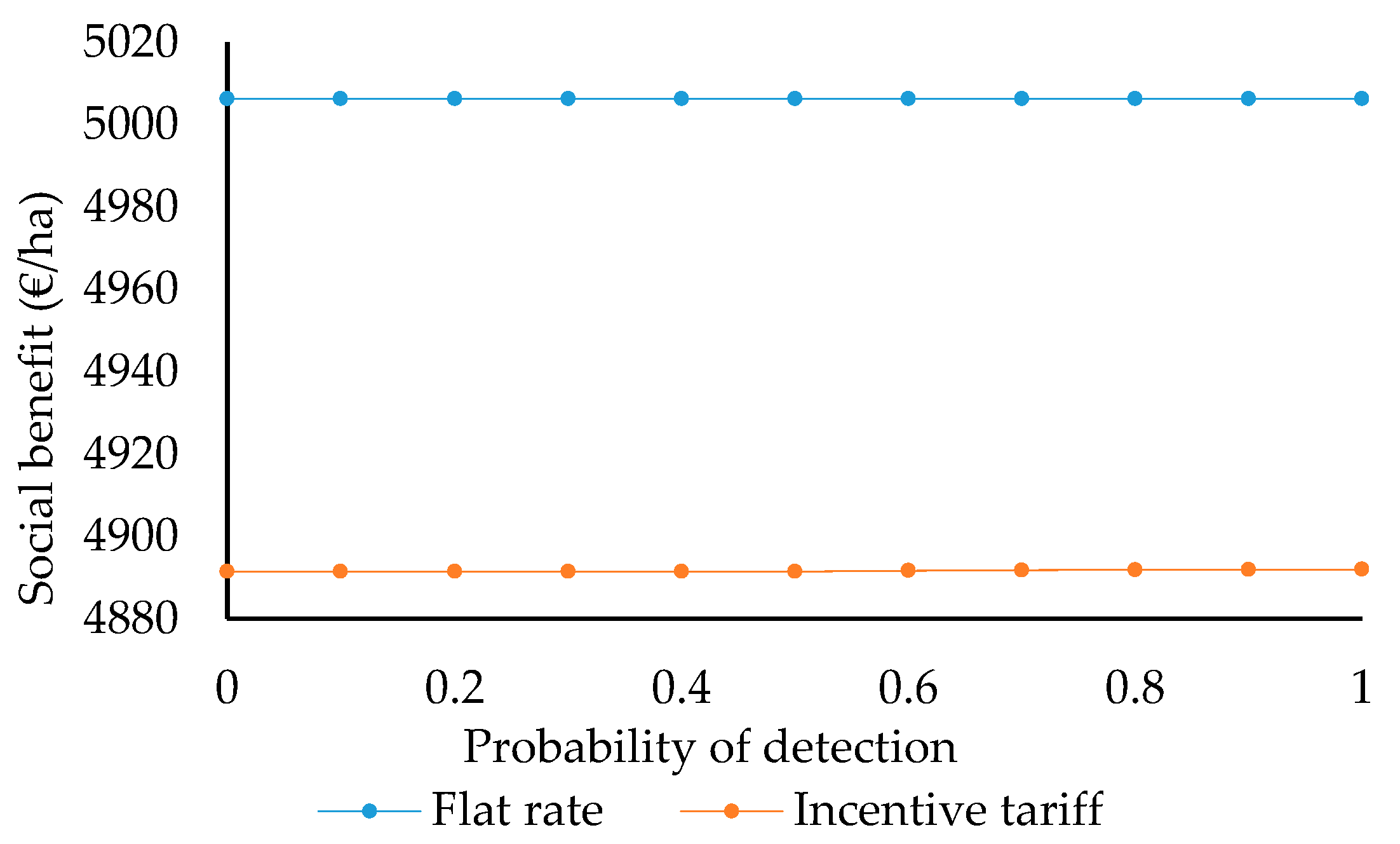
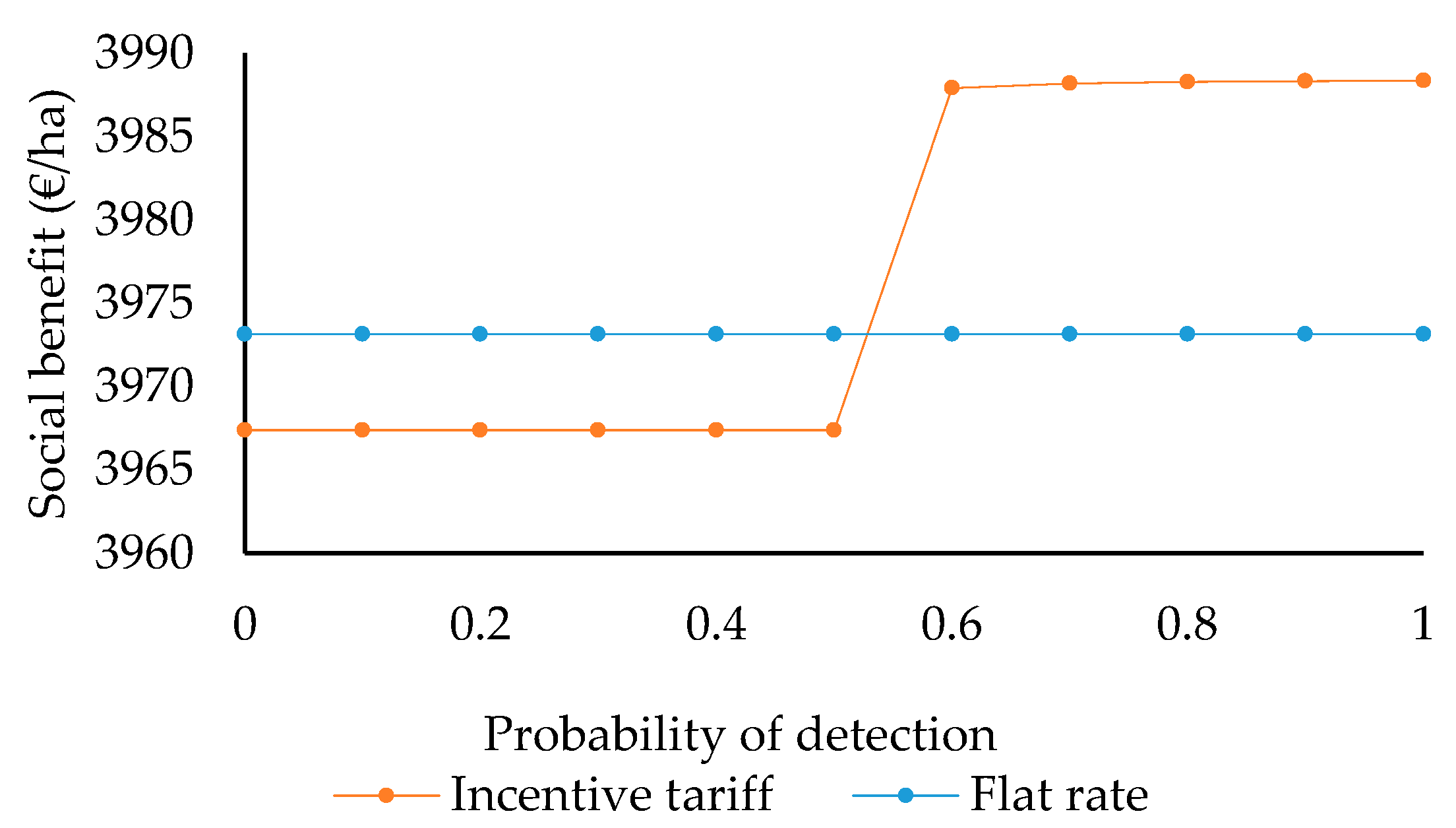
© 2017 by the authors. Licensee MDPI, Basel, Switzerland. This article is an open access article distributed under the terms and conditions of the Creative Commons Attribution (CC BY) license (http://creativecommons.org/licenses/by/4.0/).
Share and Cite
Lika, A.; Galioto, F.; Viaggi, D. Water Authorities’ Pricing Strategies to Recover Supply Costs in the Absence of Water Metering for Irrigated Agriculture. Sustainability 2017, 9, 2210. https://doi.org/10.3390/su9122210
Lika A, Galioto F, Viaggi D. Water Authorities’ Pricing Strategies to Recover Supply Costs in the Absence of Water Metering for Irrigated Agriculture. Sustainability. 2017; 9(12):2210. https://doi.org/10.3390/su9122210
Chicago/Turabian StyleLika, Alban, Francesco Galioto, and Davide Viaggi. 2017. "Water Authorities’ Pricing Strategies to Recover Supply Costs in the Absence of Water Metering for Irrigated Agriculture" Sustainability 9, no. 12: 2210. https://doi.org/10.3390/su9122210
APA StyleLika, A., Galioto, F., & Viaggi, D. (2017). Water Authorities’ Pricing Strategies to Recover Supply Costs in the Absence of Water Metering for Irrigated Agriculture. Sustainability, 9(12), 2210. https://doi.org/10.3390/su9122210





